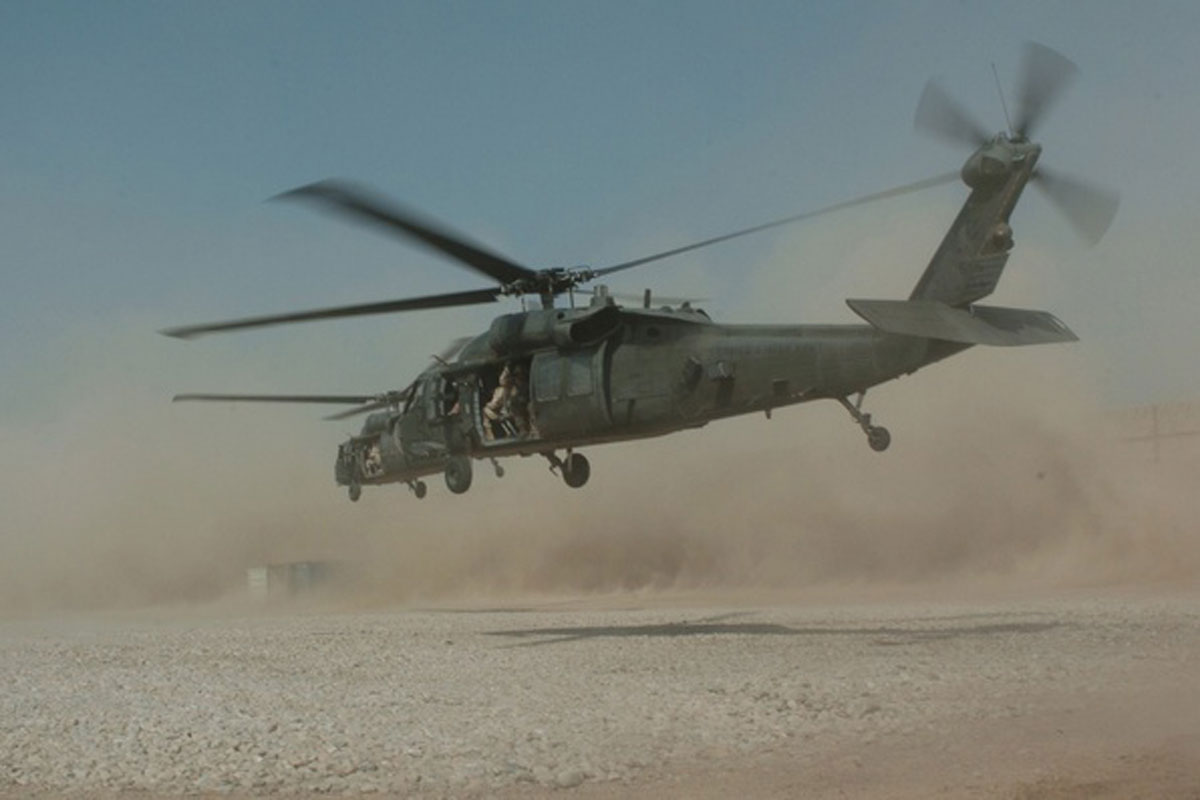Specialist Insights: Enhancing Effectiveness in UH 60 Helicopter Workflow
Specialist Insights: Enhancing Effectiveness in UH 60 Helicopter Workflow
Blog Article
Understanding the Mechanics and Design Behind Uh 60 Helicopters
The UH-60 helicopter, typically recognized as the Black Hawk, stands as a peak of modern rotorcraft innovation, personifying a blend of robust engineering and complex technicians. As we peel back the layers of the UH-60's design, a world of complex systems and thorough engineering comes to light.
History of UH-60 Helicopters
The background of UH-60 helicopters traces back to the late 1970s when the United States Army looked for a functional and innovative utility helicopter to change its aging fleet. In action to this requirement, the Sikorsky Aircraft Firm established the UH-60 Black Hawk helicopter. Introduced in 1979, the UH-60 quickly came to be a staple in armed forces operations due to its remarkable abilities.
The UH-60 was developed to excel in a variety of goals, consisting of troop transport, clinical emptying, digital war, and special procedures. Its capability to adapt to various roles made it a beneficial possession to the U.S. uh 60. Military and various other military forces around the world
For many years, the UH-60 platform has actually gone through numerous upgrades and variations to boost its performance and equal advancing objective needs. These helicopters have seen extensive solution in problems such as the Gulf War, Afghanistan, and Iraq, showcasing their integrity and flexibility in varied functional atmospheres. The UH-60's abundant background is a testament to its long-lasting heritage as a premier energy helicopter.

Engine and Power Systems
Making use of sophisticated propulsion innovation, UH-60 helicopters are geared up with sophisticated engine and power systems to ensure optimum efficiency and reliability in a variety of functional scenarios. The UH-60, generally called the Black Hawk, is powered by two General Electric T700-GE-701D engines, each efficient in providing up to 1,940 shaft horse power. These turboshaft engines supply the required drive for the helicopter to bring out its missions properly, including army transport, clinical emptying, and fight support.

Blades System and The Rules Of Aerodynamics
Exactly how do the rotor system and the rules of aerodynamics of UH-60 helicopters contribute to their functional efficiency and flight capabilities? Go Here The rotor system of the UH-60 helicopter plays an important duty in offering lift and propulsion.
The rules of aerodynamics additional resources also play a vital role in the efficiency of UH-60 helicopters. The structured fuselage and blades blade layout decrease drag, permitting the helicopter to achieve higher rates and better fuel performance. The aerodynamic style of the UH-60 additionally adds to its capability to run in varied environmental conditions, consisting of high altitudes and hot temperature levels.
Avionics and Flight Control Equipment

In its elaborate sychronisation with the blades system and the rules of aerodynamics of UH-60 helicopters, the avionics and trip control systems form an important network of modern technologies forming the airplane's operational capabilities. Avionics include the digital systems made use of for interaction, navigating, and monitoring various aircraft functions. In the UH-60, these systems include digital displays, communication radios, GPS navigation, weather radar, and autopilot systems. These avionics systems provide important info to the pilots, boosting situational understanding and making certain safe and efficient procedure of the helicopter.
The trip control systems of the UH-60 are accountable for equating the pilot's inputs into the suitable modifications to the rotor system, making sure steady trip and ability to move. These systems contain hydraulic actuators, servos, and computer systems that function together to control the main and tail rotors, as well as various other trip control surface areas. By specifically taking care of the helicopter's trip characteristics, these systems make it possible for pilots to execute a vast array of missions, from transport and search-and-rescue to battle procedures, with accuracy and self-confidence.
Role and Applications in Aviation
Avionics systems in UH-60 helicopters incorporate an array of digital systems that help in navigation, communication, monitoring, and controlling various airplane features. These systems consist of electronic screens, autopilot systems, communication radios, GPS navigation tools, and climate radar. In addition, these systems integrate security features such as auto-pilot settings, surface understanding warning systems, and security enhancement systems to improve the general safety and operational capacities of the UH-60 helicopters in numerous objectives, including troop transport, clinical emptying, search and rescue, and aerial firefighting.
Verdict
In final thought, the UH-60 helicopter is a functional aircraft with an abundant history and progressed engineering. Its engine and power systems, blades system, aerodynamics, avionics, and flight control systems all function together to make it a trusted and effective machine.
In its elaborate control with the rotor system and aerodynamics of UH-60 helicopters, the avionics and trip control systems create a critical network of technologies shaping the airplane's functional capacities.The flight control systems of the UH-60 are accountable for equating the pilot's inputs right into the appropriate adjustments visit this website to the rotor system, making sure secure flight and maneuverability. Avionics systems in UH-60 helicopters include an array of digital systems that aid in navigation, communication, tracking, and managing different airplane features. In addition, these systems include safety features such as autopilot modes, surface recognition warning systems, and stability augmentation systems to enhance the overall safety and operational capabilities of the UH-60 helicopters in numerous goals, including troop transport, medical evacuation, search and rescue, and aerial firefighting.
Its engine and power systems, rotor system, aerodynamics, avionics, and flight control systems all work together to make it a reliable and efficient maker.
Report this page